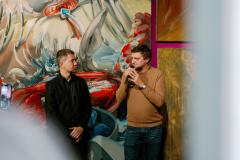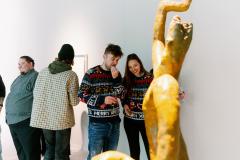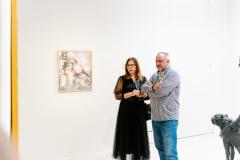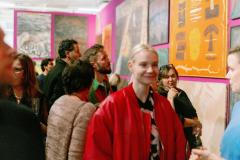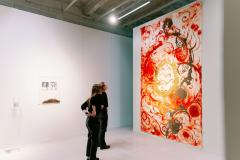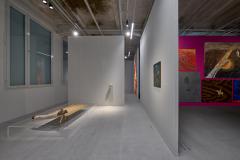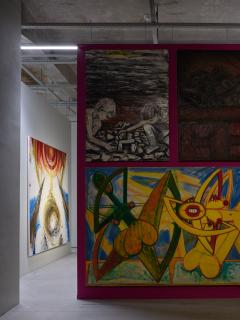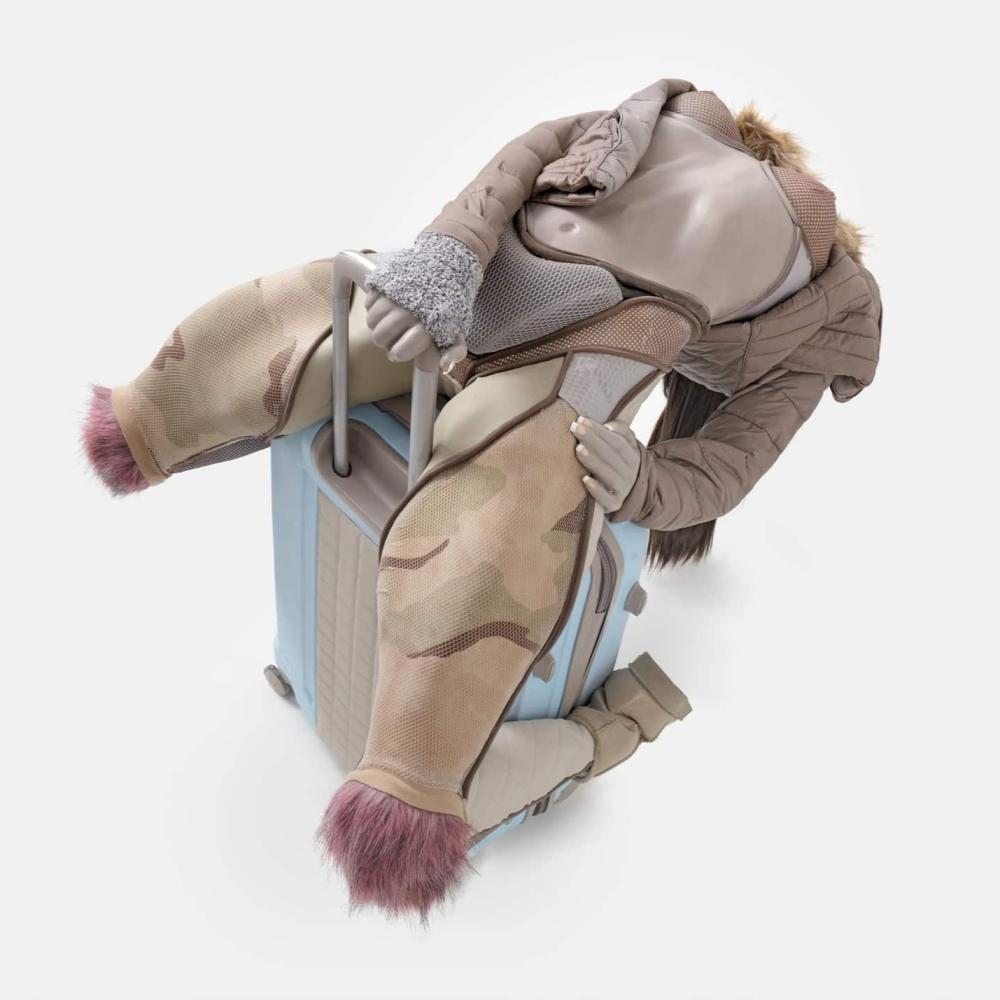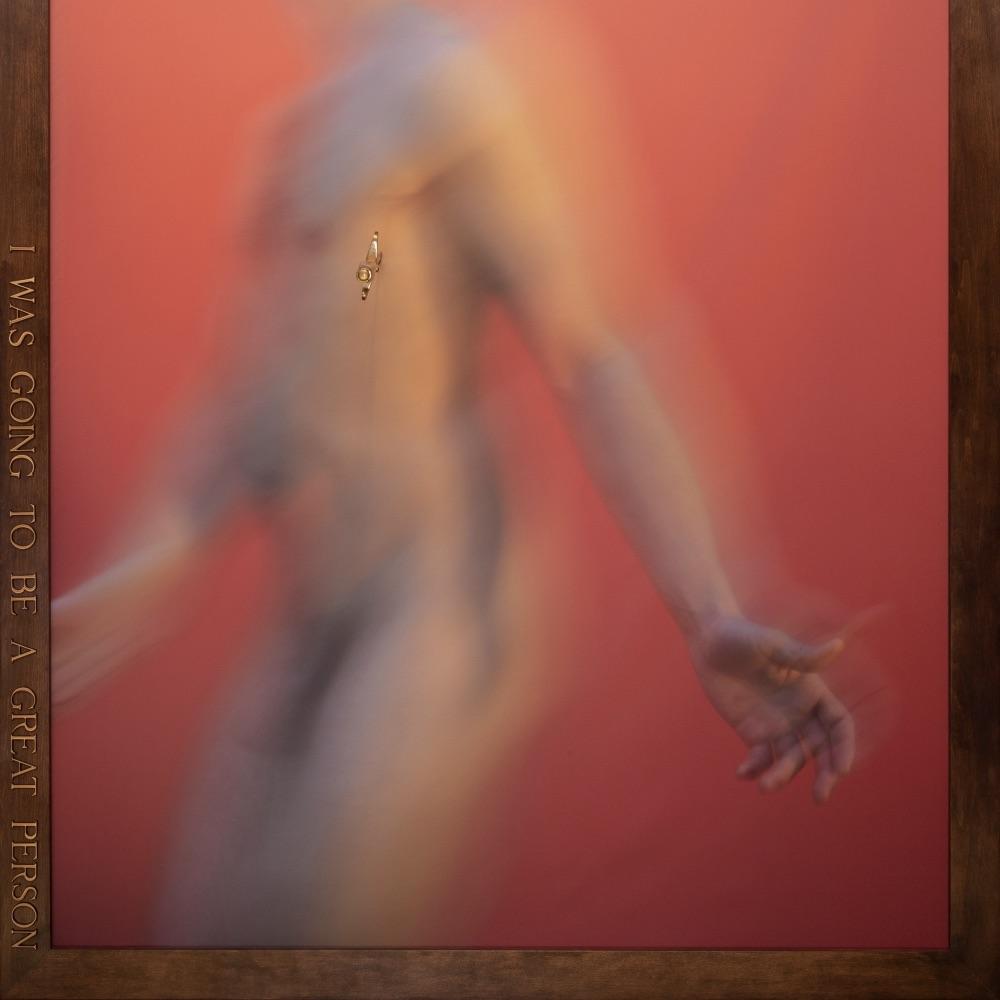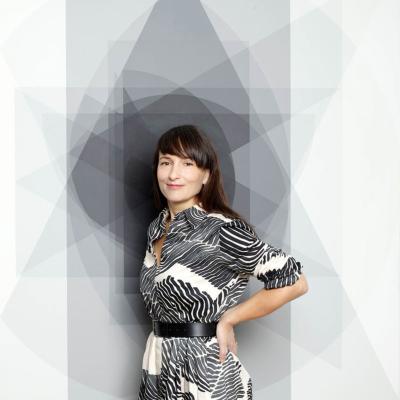
The exhibition Eighties: Signal IV, which you can visit at the Telegraph Gallery until March 20, maps the artistic expressions of the 1980s. At that time, the most important artistic acts took place outside the official scene. The visual language of selected artists responded to social pressures and global impulses, and formed new mindset to the medium of image, object and performance. Through articles on specific works and artists, we also want to bring closer the atmosphere and cultural context of this time.
Signal IV represents a curated selection from Robert Runták’s Collection, this time focusing on works from the unofficial art movement of the 1980s, specifically covering the period from 1979 to 1991.

The exhibition presents several generations of artists active during the 1980s along two primary lines. The first includes older artists who began their creative journeys in the 1960s and 1970s and subsequently became, in a way, imaginary mentors for the emerging generation (Milan Knížák, Adriena Šimotová, Aleš Veselý, Alena Kučerová, Jiří Načeradský, and others). The exhibition’s natural theme could be viewed as the relationship between teachers and their students; however, the artists mentioned above were not affiliated with formal academic institutions and stood outside official circles. Any interaction occurred behind closed doors in their studios, where their work could inspire younger artists. For students at that time, interactive debate within art schools was lacking, and information about the current international and domestic underground art scene was taboo. After the more relaxed 1960s, art magazines in Czechoslovakia were shut down, galleries closed under various pretexts, and liberal institutions dissolved, halting all discussion around exhibition and installation approaches. The complex unofficial gallery network of the 1970s and 1980s operated on the peripheries, in private, alternative spaces, or outdoors.
The decade's most historically significant “projects” included events Malostranské dvorky (Malá Strana Courtyards, 1981), Setkání na tenisových dvorcích TJ Sparta (Meeting on TJ Sparta Tennis Courts, 1982), Chmelnice (symposium in the hop garden in Mutějovice, 1983), and the highly influential Konfrontace I–IV (Confrontation I–IV, 1984–1987), a series of short-term exhibitions that shaped a new generation of artists. These shows were organised by the artists themselves, and the curatorial and marital duo Jana and Jiří Ševčík coined the term 'postmodern painting' concerning this artistic movement. Through these exhibitions, artists had the opportunity to install their work in public spaces, creating an intense social aspect through the interaction of displayed works with the installation site and visitors, who had to actively seek out the locations. Site-specific installations were prevalent, often crafted on-site by the artists. Police persecution accompanied all these events, and when they weren't halted immediately, they were prematurely closed. The space at Chmelnice even burned down due to an arson attack on Ivan Kafka’s work after other forms of suppression failed. Most artists featured in the Telegraph Gallery exhibition were highly active in these events, providing us with a glimpse of works created during a time unfavourable to creative freedom, often as a form of protest or a need to express their stance— to stand in opposition.
The exhibition’s second line features the emerging generation of artists of that time. This group includes artists associated with the Ševčíks, the art group Tvrdohlaví (Jiří David, Jaroslav Róna, Stanislav Diviš), the circle around the Behémót Gallery (Margita Titlová Ylovsky, Václav Stratil, Vladimír Kokolia), and other allied artists and solitaires, such as Jiří Kovanda, Antonín Střížek, Vladimír Skrepl, Tomáš Císařovský, Martin Mainer, Tomáš Ruller, Marian Palla, and others.
On the visual culture, latent aesthetics, and potential sources of inspiration of the “eighties,” Václav Hájek writes in an essay commissioned for this catalogue, describing the environment as a “sensory and emotional wasteland.” The most intriguing elements of the 1980s art scene took place beyond the official sphere, hidden from the oversight of evaluation committees. These committees were meant to guarantee the observance of high ideological and artistic standards and were tasked with “assessing artistic works before their public application,” i.e., controlling and censoring works before their exhibition.
Robert Runták’s Collection has been thoughtfully compiled and expanded for over a decade. All works on display were acquired at least two decades after their creation, giving the collector a significant advantage. By then, the art scene of the 1980s was closed, documented in literature, and covered by numerous exhibitions, including retrospective ones. This brings many advantages compared to collecting contemporary works as they emerge. The sole drawback could be the concern over whether the best works will remain accessible and up for acquisition. From today’s perspective, this exhibition, composed of pieces from a single private collection, offers not only the collector’s subjective view but also serves as a unique and comprehensive insight into the Czech art scene of the 1980s.
Text: Pavla Kosař



